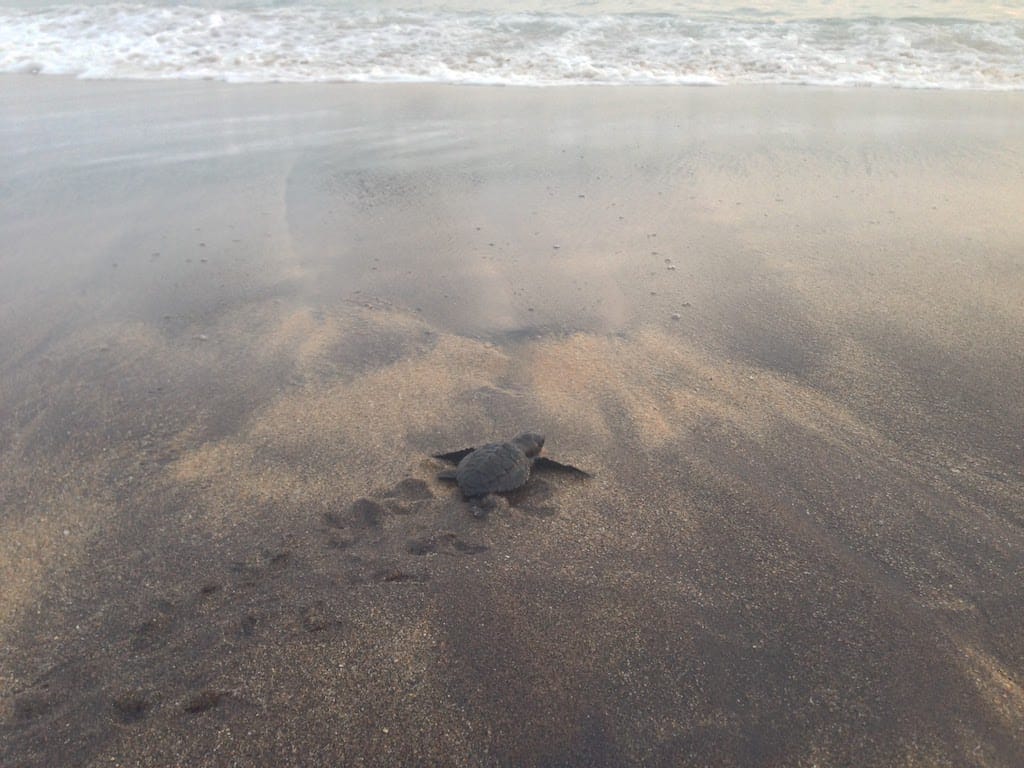Sea Turtles in Florida
5 species of sea turtles in Florida:
- Loggerhead
- Green
- Leatherback
- Kemp’s Ridley
- Hawksbill
All of Florida’s sea turtle species are endangered or threatened.
Sea turtles and their nests are protected by law, including the Endangered Species Act. It’s illegal to harass or disturb sea turtles, nests or hatchlings.
To report someone disturbing a sea turtle nest or an injured, dead or harassed sea turtle call Wildlife Alert 888-404-FWCC (888-404-3922) or report it online. Cell phone users can also call *FWC or #FWC, or send a text to Tip@MyFWC.com.
Sea Turtle Season
Sea turtles “nest’ in the spring and summer. Female turtles come ashore onto sandy beaches, dig nests in the sand, and lay eggs, called a “Clutch”.
Sea turtle nesting in Florida varies by species, year and location, but nesting generally occurs from March through October.
Female sea turtles return to the place of their birth to lay eggs. This is one reason why it is so important to protect sea turtle habitats.
Sea turtles come ashore to nest at night, and need darkness to nest and find their way back to sea. Artificial lights confuse their navigational senses. Many beachfront communities in Florida have “lights-off” programs to maintain darkness to help nesting sea turtles.
How to View Sea Turtles in Florida
How to see sea turtles in Florida? Sea turtles usually come ashore at night, and it’s important not to disturb them. The best way to see a sea turtle in Florida is to attend a “Turtle Walk” or a hatchling release with an authorized provider.
The Florida Fish and Wildlife website maintains a list of sea turtle viewing opportunities, including walks and hatchling releases, organized by region and location. More information can be found on the Florida FWC website.
Nesting Locations
Sea turtle nesting sites in Florida are spread throughout the state. Nesting occurs in every section of Florida’s coastline.
State Parks and National Parks have become important nesting sites becuase they offer protection from disturbance and natural, undeveloped beaches.

Threats to Sea Turtles
Sea turtles are vulnerable to many threats, including:
- Habitat loss
- Loss of seagrass beds
- Red tide and water pollution
- Storms
- Plastic Pollution
- Light Pollution
- Illegal poaching
- Being run over by watercraft
- Invasive species
- Harm from humans and pets
- And many other challenges
